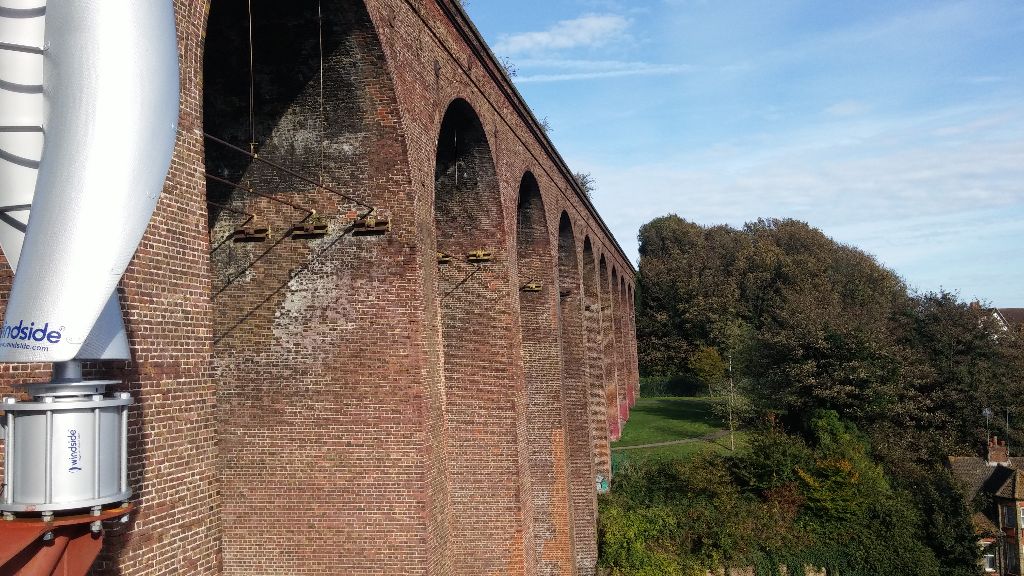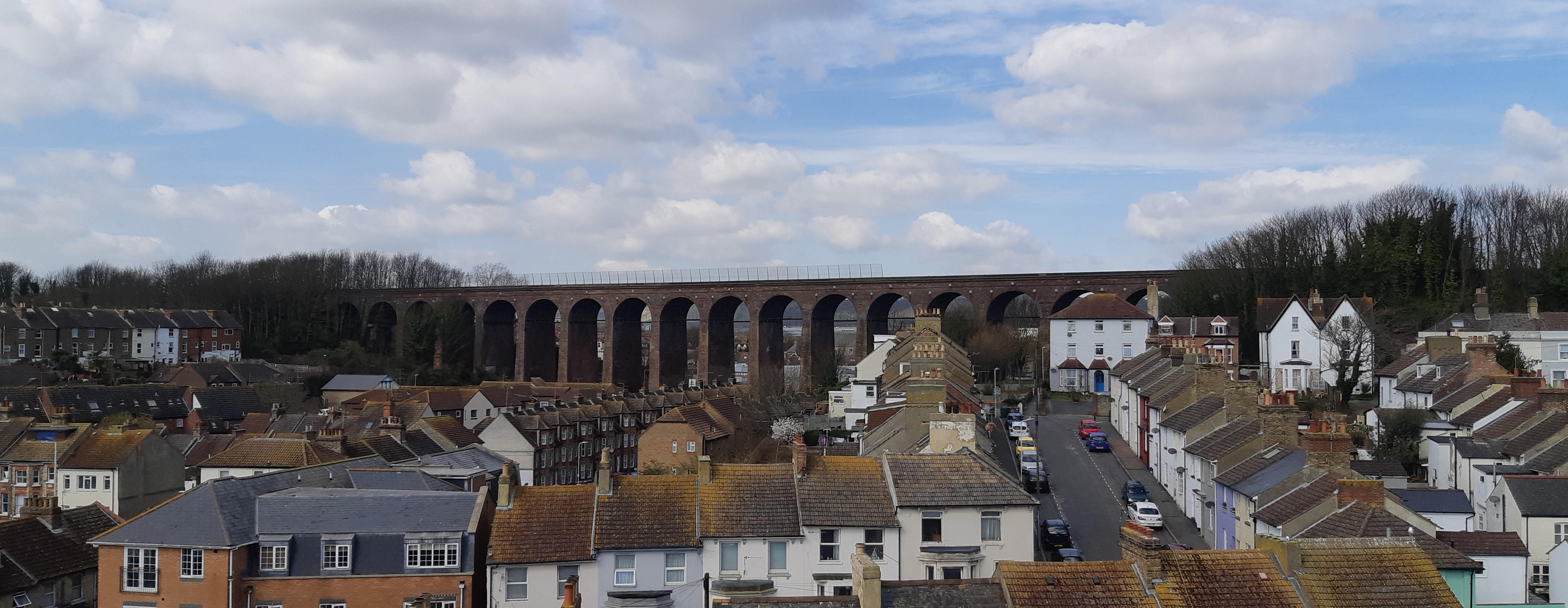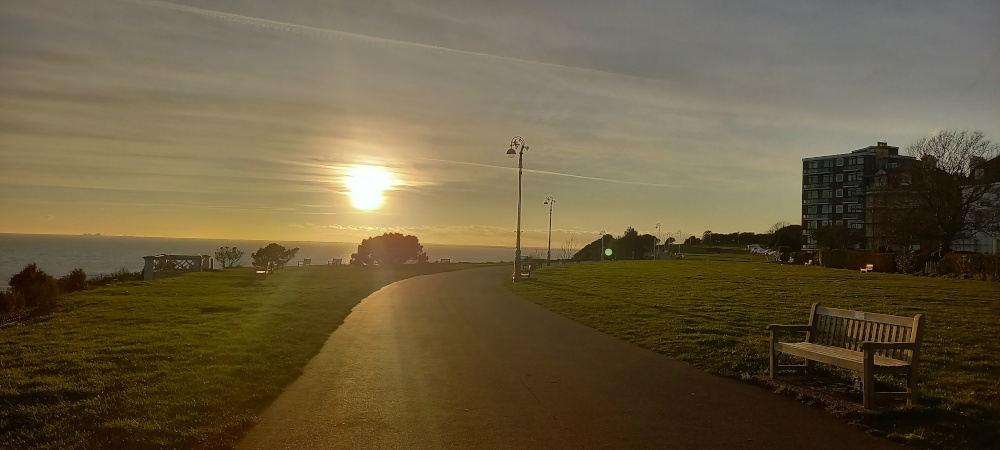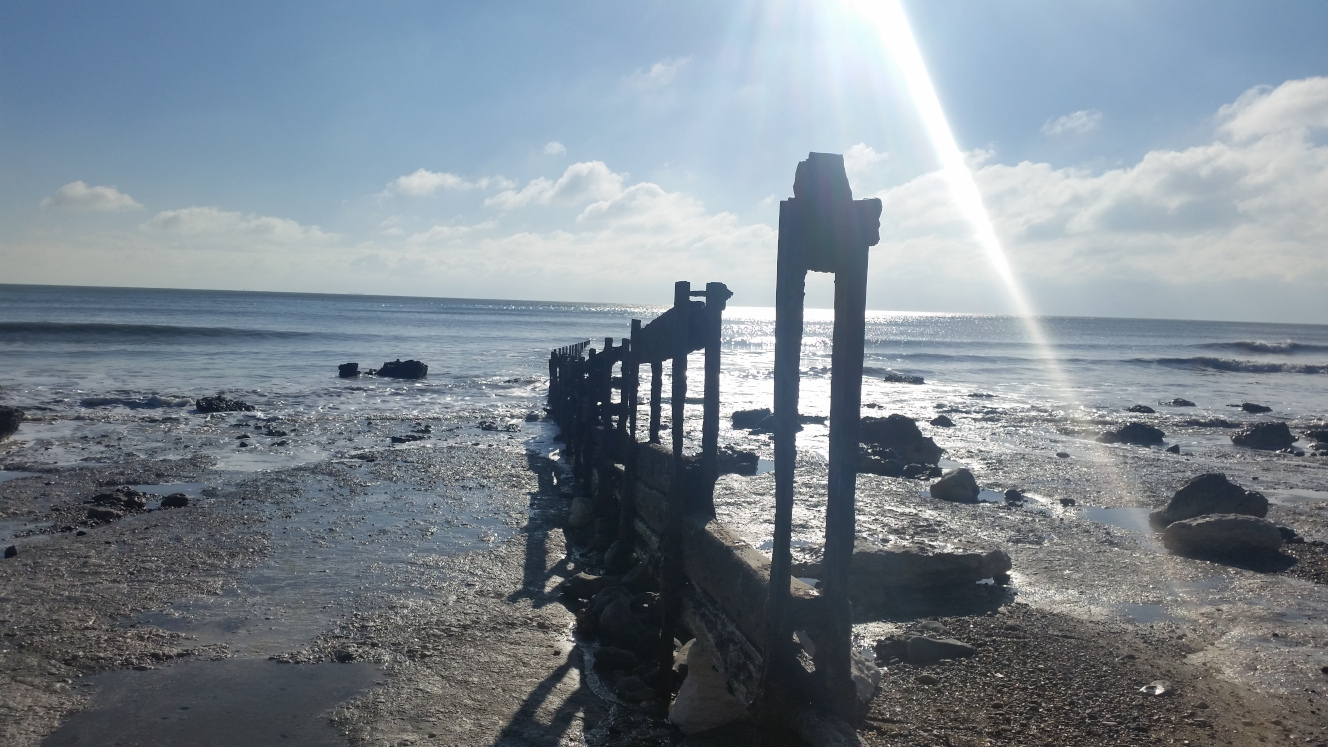Places
Foord Valley Railway Viaduct – Standing Proud Over Folkestone
The Foord Valley Railway Viaduct was built during the Golden Age of the railway. The Victorian engineer Sir William Cubitt is credited with inventing many contraptions, including the self-regulating windmill. However, his work with South Eastern Railways as engineer-in-chief enabled public transport to reach all corners of the country.
In 1843, Cubitt blew off the face of the Round Down Cliff between Folkestone and Dover with a massive gunpowder-fueled explosion. This gave him the space to run a railway line along the coast, in a tunnel through the cliffs, to engineer the viaduct over Foord Road, as well as the Harbour viaduct.
This vintage sketch of the viaduct in 1844 is courtesy of the Mills Archive Trust. It shows the wind and water mills which have since been removed.
The structure over Foord Road is certainly high, but not the highest in the world. There are a few contenders for that accolade, one being Stockport’s railway bridge which stands at 111ft high. Ours is definitely impressive though with 19 arches stretching across the Foord valley, reaching nearly 100ft high.
High Speed 1
Over 170 years after it was built, the Foord Valley Viaduct now carries High Speed 1 over Folkestone from London St Pancras to the South Coast. We’re now even closer to London, only 53 minutes away!
Dave Shackle, drummer for Edison Lighthouse, got a photo of the fast train in action from the hills behind Folkestone, showing this fantastic view.
local iconic landmark
The Railway Viaduct is as much a part of Folkestone as the Harbour Arm. Whenever Folkelife posts a photo on our social media, everyone joins in with their love of this amazing structure crossing Bradstone Road. We thought we’d use your photos and your comments to share the community feel for our arches!
Levi Hewitt captured the glory of the railways with the Orient Express steaming across the viaduct.
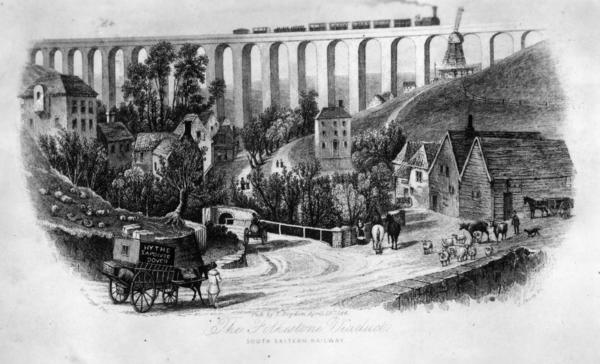
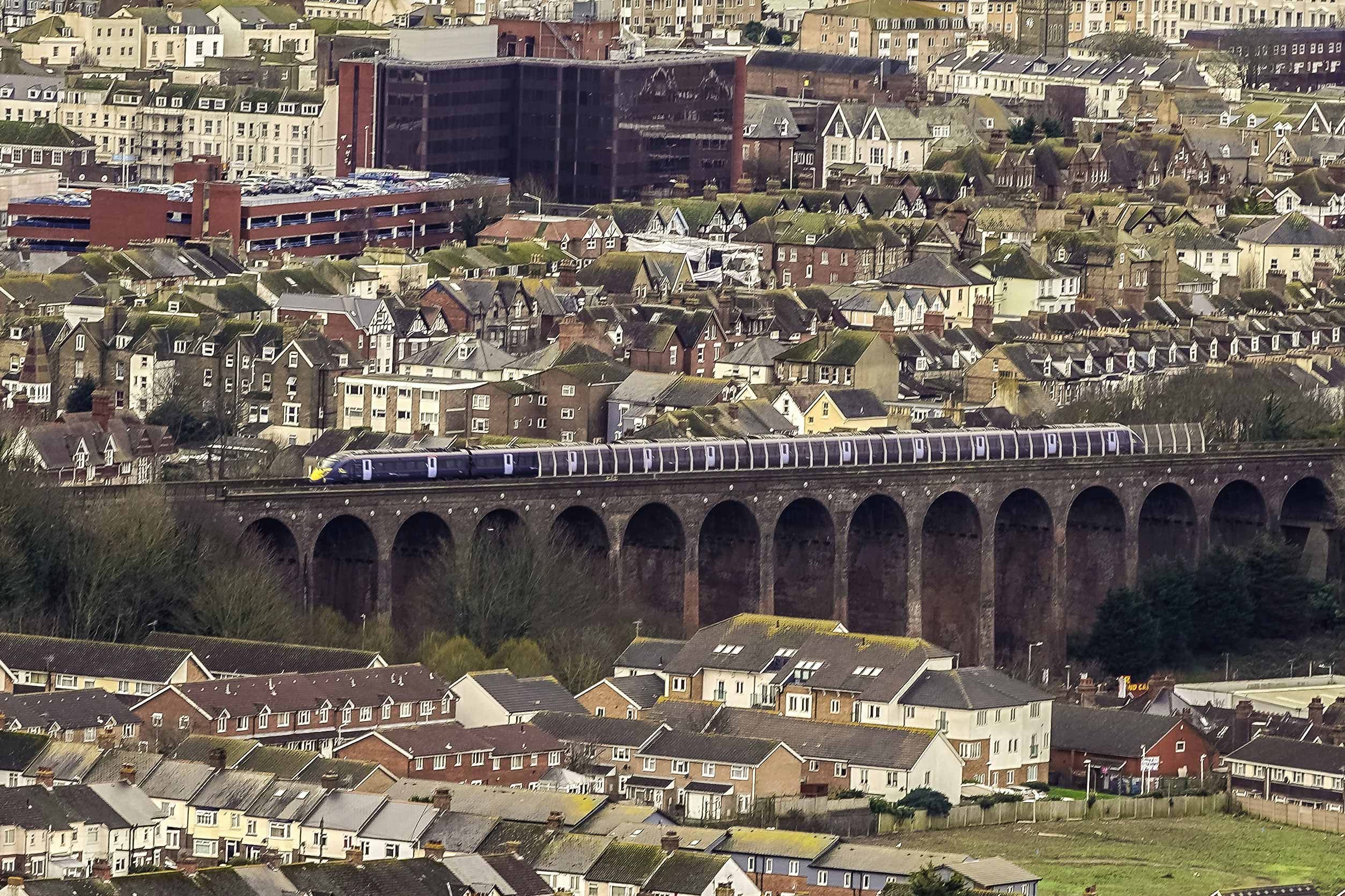
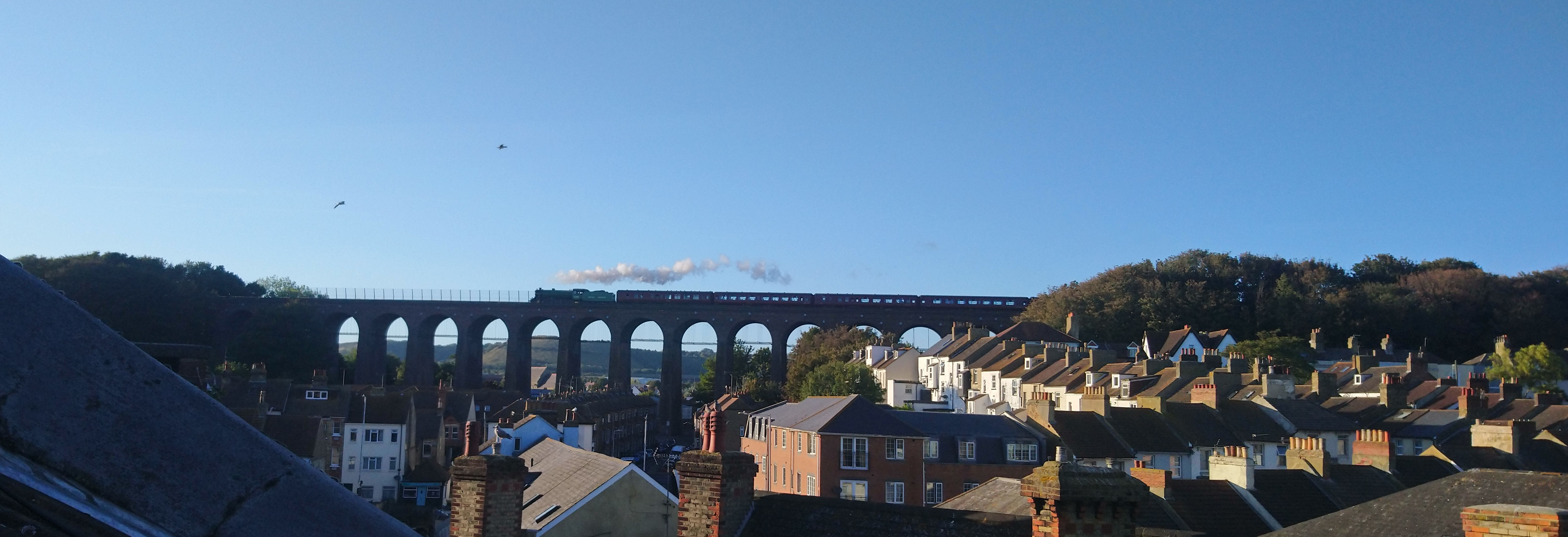
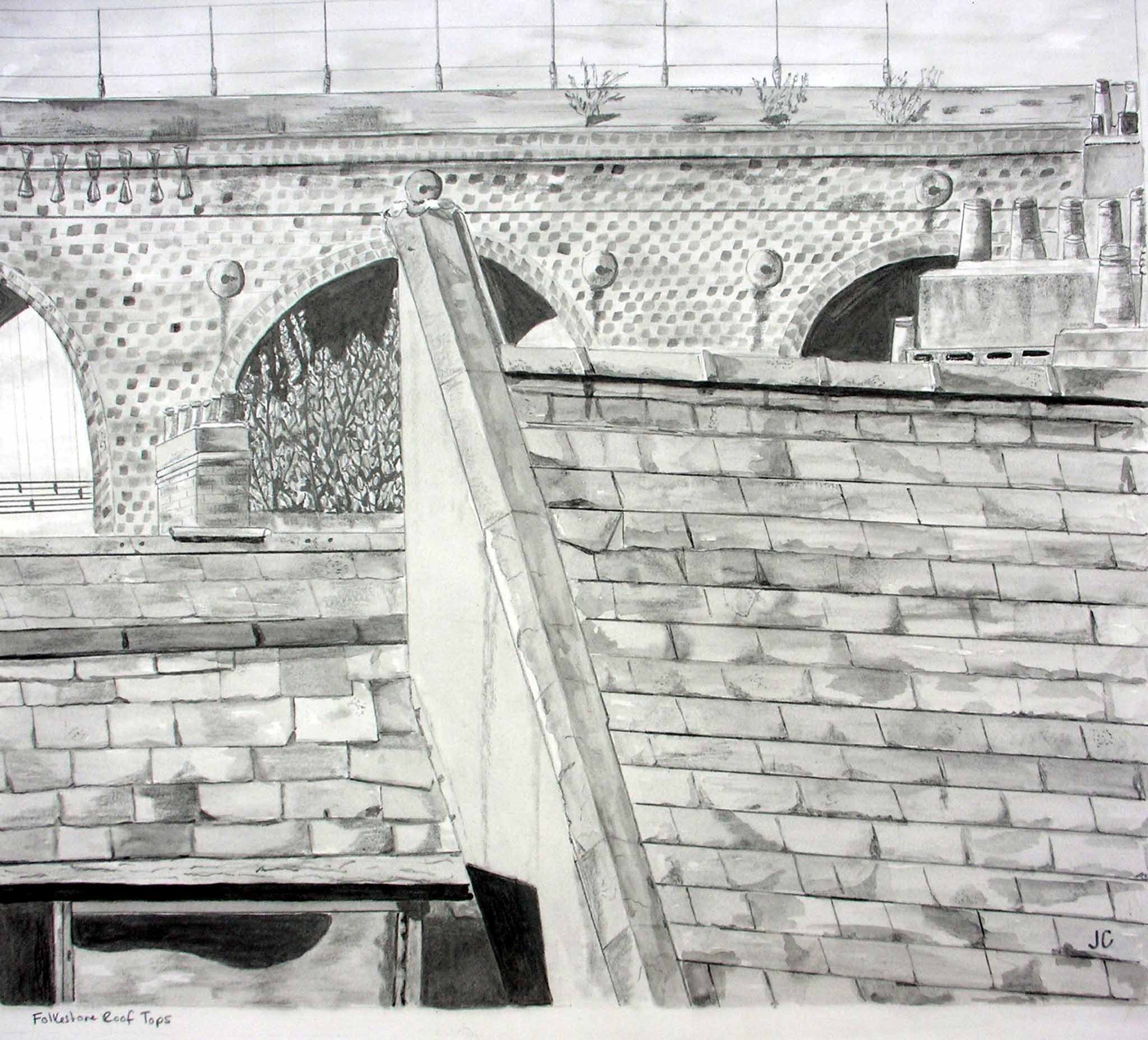
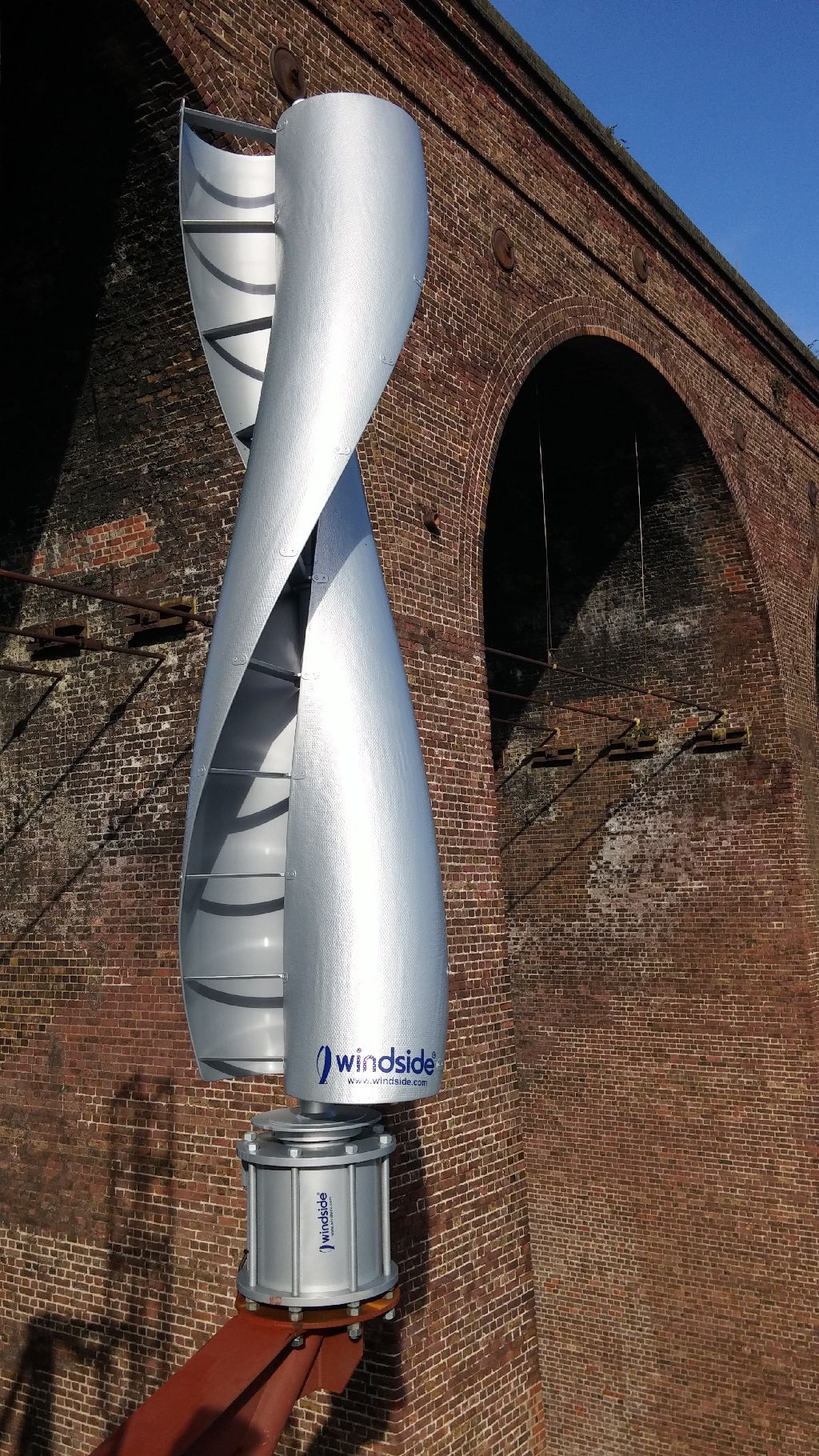
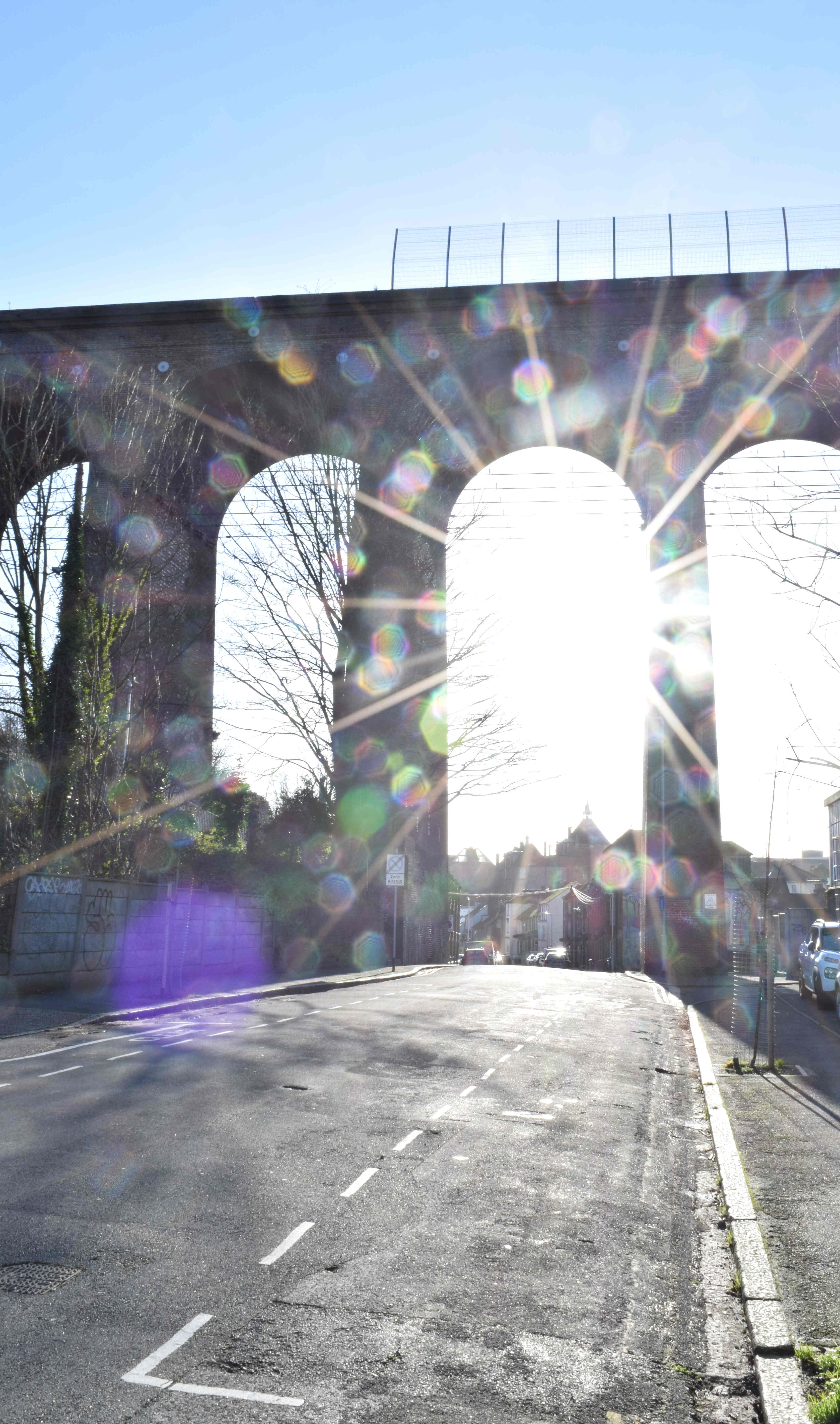
built in record time
The railway line reached Folkestone in 1843, but had to stop at a temporary station whilst the viaduct was built. Building started in June and the first passengers crossed the viaduct on 18th December 1843. After that, Junction Station was put in, and the line continued onto Dover. The Harbour line was installed, and a rail-connection to the sea was complete. The steel tie rods supporting the arches were added a hundred years later, in 1943. It’s a Grade II listed structure and stands proud as one of the great bridges of the South Eastern Railway.
Local resident John-Luke Casey enjoys this brilliant view from the back of his house. “It’s a genuinely magical moment to sit with my kids and watch the trains go over at night.”
Local Brickwork
This structure really dominates the landscape as you can see. It’s amazing to think that it survived both World Wars without being bombed. Nicolas Reed published this interesting fact in Folkestone Creative, Lilburne Press: “The bricks used to build the bridge are said to have come from the clay in Kingsnorth Gardens, near Folkestone Central Station. That’s why the gardens are several feet lower than the surrounding land!”
The pencil sketch is from Janice Carrera, with great attention to detail of the roof-tops as well as the brick work.
Triennial lift
In the 2014 Folkestone Triennial, a wind-powered lift created by Ooze Architects gave us the chance to see the view from the top of the viaduct. Folkestonian Rachel Birchley took these photos of the installation, and the view beyond.
Folkestone: entitled to a visit
Here’s a wonderful quote on the impact the railway had on Folkestone in 1843. It comes from Folkestone’s Railways by Brian Hart, Wild Swan Publications, 2002
“A marvellous change has been wrought in the circumstances of this town by the
South Eastern Railway. If any place on the coast of England is entitled to a visit or to
be patronised as a watering place, it is Folkestone. Although the town, at present,
offers but little attraction, it will, probably, at no distant period be raised not only to be one of the most important towns on the south coast of England, but also to be a favourite watering place”.
The town certainly has become a favourite watering place for many since this was written!
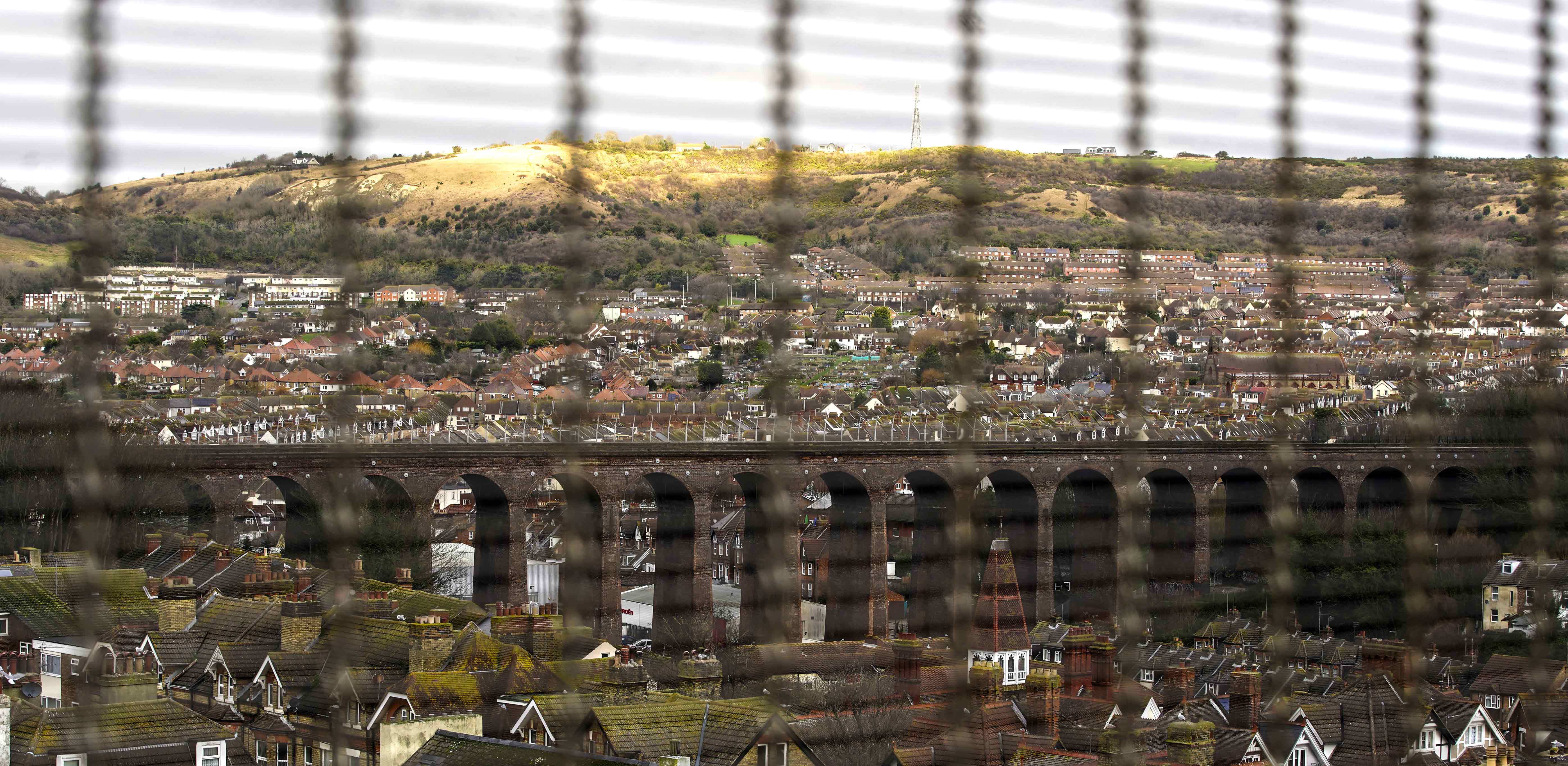
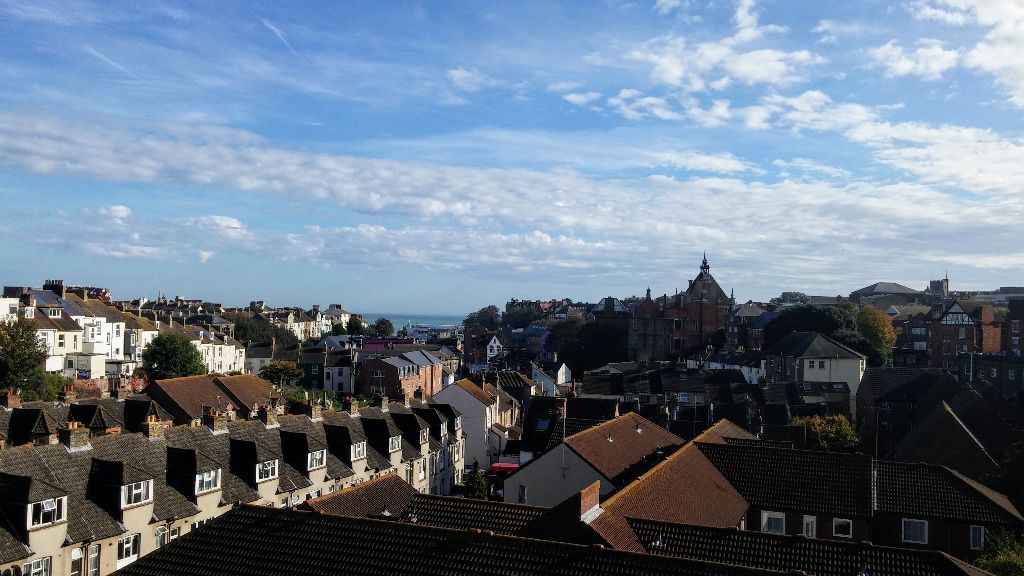
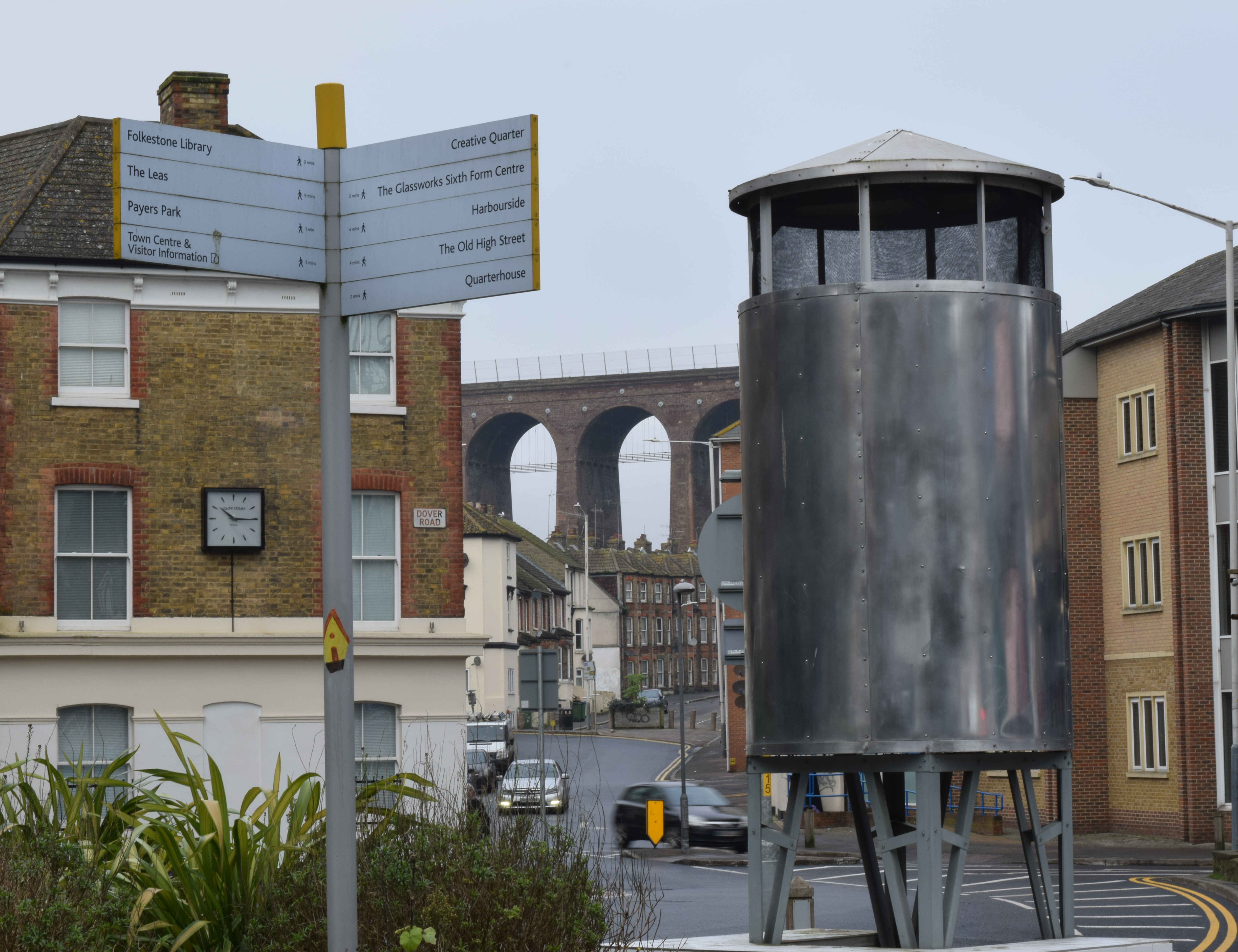
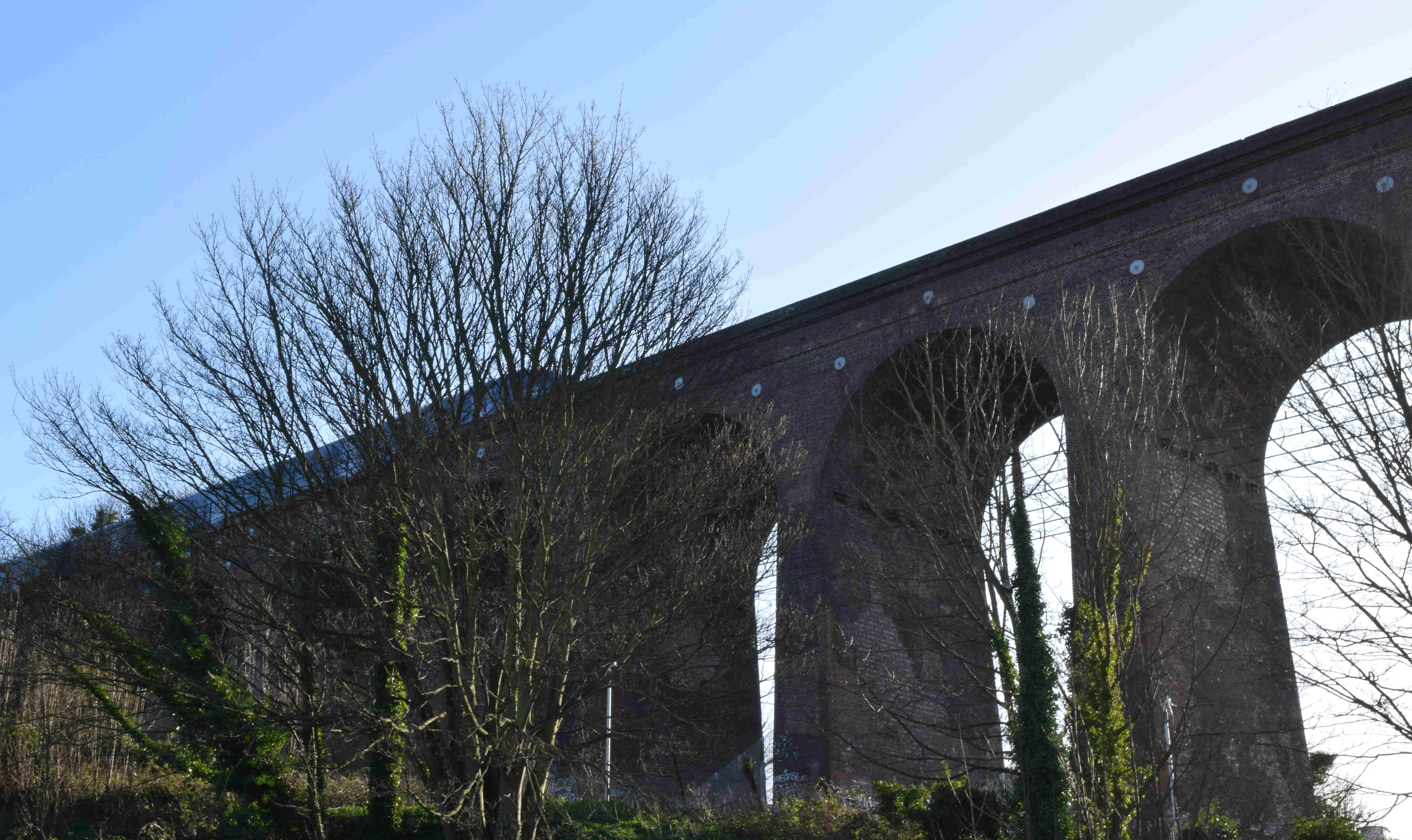
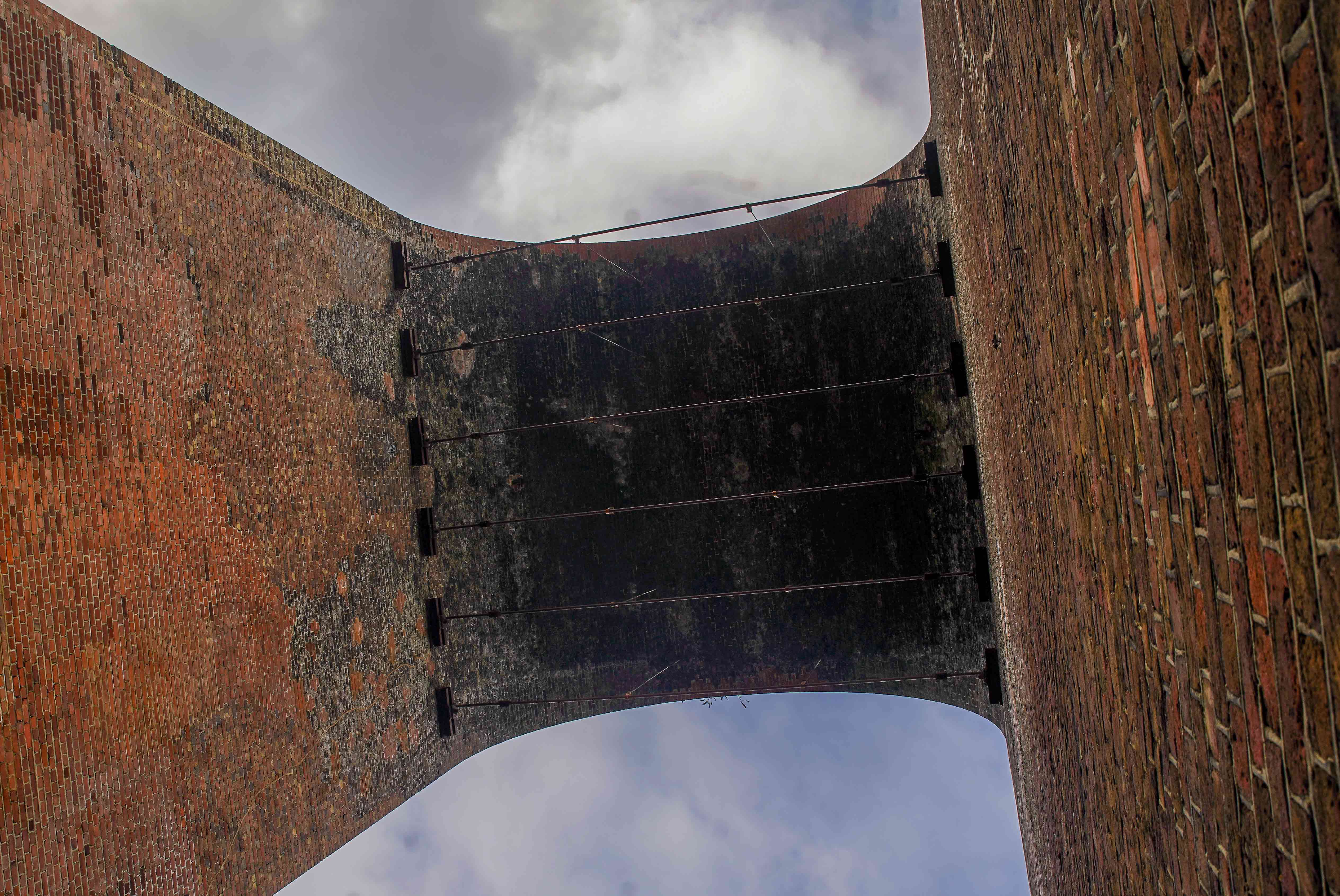
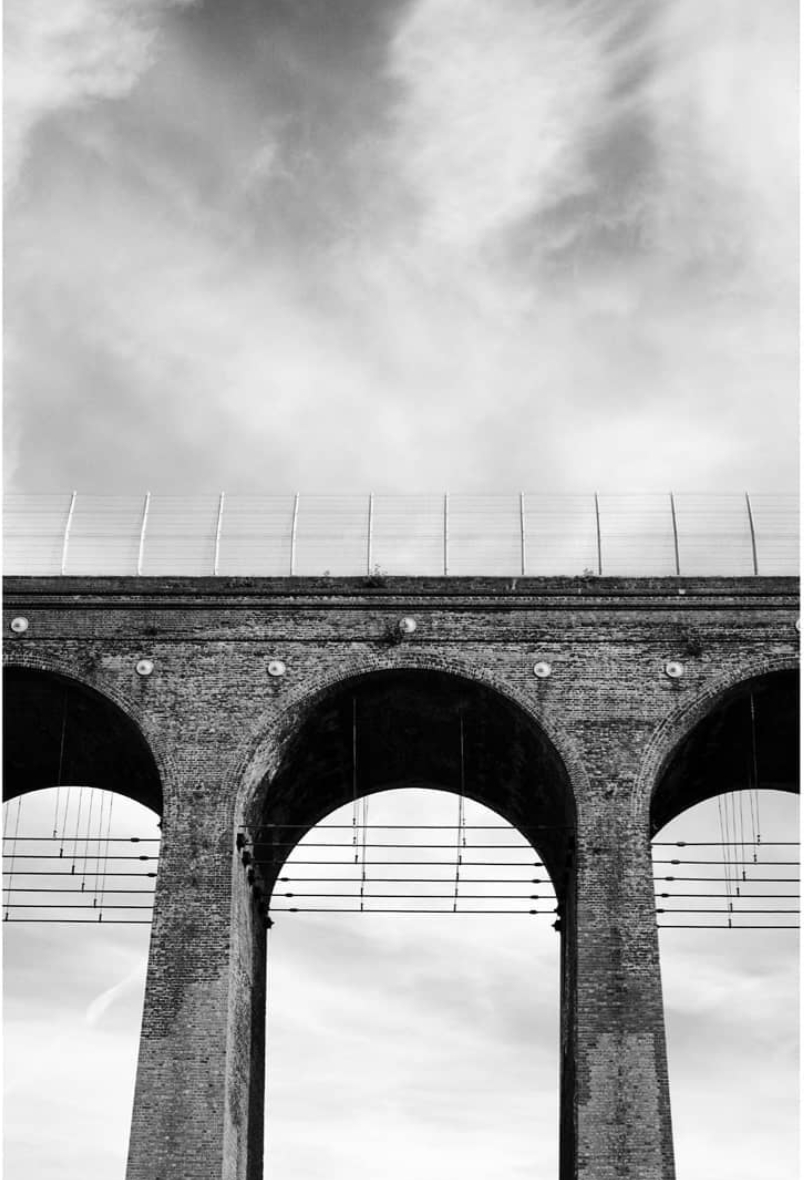
Photo Credits clockwise: Dave Shackle – Under the Arch; Charlie Thomas Photo – Black and White; Helen Sharp – HS1 and Water Tower; Rachel Berkley – View from the Bridge; Dave Shackle – Through the Wires.
